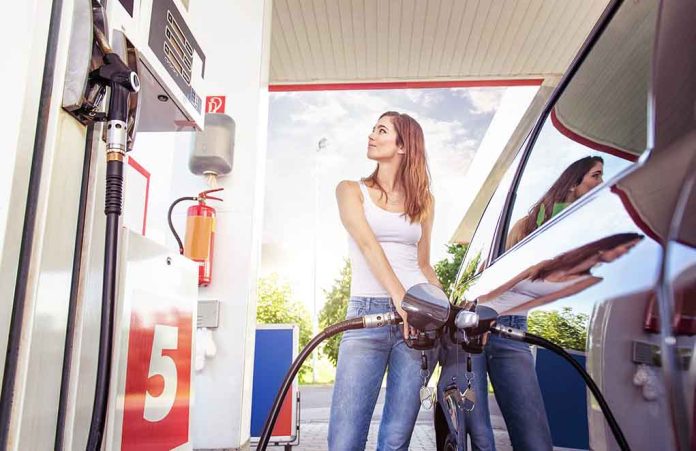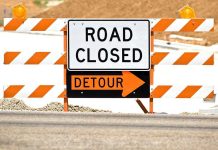
Save Major Bucks On Gas With These 10 Incredible Life Hacks
(DailyDig.com) – Whether one blames it on the demand-supply disparity, political unrest in oil-rich regions, or a hybrid of the two, the facts are consumers are paying top dollar for their gas. The national average reached a record high of $4.173 in March 2022, dethroning July 2008’s record high of $4.114, according to the New York Times. With things as they are, car owners need to learn ways to stretch that gas mileage as much as possible.
While upgrading to a better, fuel-efficient vehicle is an option for some, this isn’t the case for a majority of Americans. However, anyone can reduce their gas bill by at least half a buck per gallon or more by making small changes in their driving habits and general car maintenance. Let’s check out these tips on how to save more.
Be a level-headed driver
Ease up on the gas and the brakes. In a real-world test done by Edmunds, aggressive driving was found to be the main culprit when it came to gas-guzzling. The experiment, done using an SUV, a truck, and a sedan, revealed composed calm drivers saved between 33% and 38% on fuel.
Aggressive driving is any activity that makes your engine work harder and consume more gas. These practices include rapid acceleration, high-speed driving, and sudden braking. The latter is one of the reasons why a smooth glide to a red light or down a slope is preferred.
Keep your tires at the correct pressure
Under-inflation is unhealthy for the gas tank. These tires will lower the gas mileage by around 0.2% per PSI drop past the optimal PSI rating. Not to mention making this a habit lowers your tires’ lifespan.
Try monitoring your tire pressure ever so often as tires deflate over time – at least once per month is okay, according to AAA. If you don’t know your car’s PSI rating, consult the manual. You could also check the sticker located on the jamb of the driver’s door.
Excessive idling is an enemy
There’s a reason why most new cars automatically halt when your car’s idle; it saves on gas. Think about it; on average, people spend around 45 to 120 seconds at a red light; 45 seconds of gas is a long time considering it only takes 10 seconds of gas if you’re starting the vehicle.
Car owners of older models should be wary about this method, though. While newer vehicles have heavy-duty starters capable of several starts every day, older cars with their start/stop engines may be unable to handle the strain.
Additionally, if you’re behind the wheel and are waiting for someone, there’s the temptation to jam to music or listen to a podcast before they arrive. This might go on for five or even 10 minutes. It is advisable one turns the car off; keeping the car running burns gas even if you’re not moving.
Ditch any unnecessary weight
Most people have a few staple items in their trunks. The older generation, for instance, carries bags of salt and sand to cope with potential icy ground or snowstorms. Yet, shedding about 100 pounds of additional storage improves the miles for every gallon by around 1%, depending on the percentage of additional weight relative to the car’s weight. This isn’t such a big problem for small vehicles as it is for larger ones.
It’s a car, not a cargo hold
The more aerodynamic your vehicle is, the smoother it moves against wind resistance, and the less the engine has to work to maintain the required speed. Adding bike paraphernalia and containers onto your roof reduces the car’s wind resistance. CNBC, quoting the U.S Department of Energy, states that your highway fuel consumption might rise to 20% due to aerodynamic drag.
Consider using rear-packed mounted luggage boxes. These reduce fuel economy to around 1% to 2% while driving in the city and between 1% and 5% for highway driving. It’s not a perfect solution, but it’s better than the 6% to 17% fuel economy for highway driving and 2% to 8% fuel economy for city driving with the luggage on top.
Properly tune up the engine
Doing proper maintenance on your car can improve its gas mileage by 4%, though this varies depending on the vehicle’s state. But it’s not just small gains; fixing a serious problem like a malfunctioning oxygen sensor can boost your gas mileage by up to 40%.
How often one should get a tune-up is covered in the vehicle’s manual.
Use the right motor oil
Edmunds emphasizes that car owners or drivers should purchase motor oil that matches certification requirements and is compatible with manufacturer specifications. Also, get a vehicle oil change as per the car manufacturer’s recommendations. All this helps improve the vehicle’s fuel mileage by around 1% to 2%. Furthermore, check for the ‘Energy Conserving’ tag on the API performance sign when buying motor oil – this oil has friction-minimizing additives.
Drive less
Use public transportation. Take out your BMX from the garage. Get into a carpool arrangement for going to work, especially with someone who owns an electric vehicle (it’s good for the environment). If the car doesn’t leave the driveway often, the gas tank doesn’t need to be filled often either.
Plan for trips efficiently
Suppose you or someone you know is traveling 20 miles away. There are several ways to reach the designation, but the driver only knows the 50-minute and the 35-minute route. Taking the longer route results in 15 minutes of gas wasted; with the current fuel prices, that’s quite a bit of money lost.
It can be hours or even days before; however, one should always plan their journey. This way, you won’t waste fuel looking for the nearest waffle house if you’ll need a mid-morning breakfast, as you already know where to go. Also, using Apple Maps and Google Maps, you may discover that the 35-minute route isn’t even the shortest way there.
Take advantage of gas reward programs
Not all fueling stations have rewards programs, but there are those that do. These programs give beneficiaries rewards like reduced gas prices or free points that can be redeemed for certain items at the gas station. A good example is 7-Eleven. Consumers can save 11 cents on the gallon for the first seven trips to the gas pump. The only thing you need to do is sign up; most rewards cards are 100% free.
Once you begin working to improve your miles per gallon, you’ll want assurances your efforts aren’t for naught. Current vehicles come with computerized meters monitoring fuel economy. After filling up, reset the count to check the fuel economy for the distance covered by that recent gas refill. Record the findings on your phone or in a mini-notebook in the glove box.
Copyright 2022, DailyDig.com













